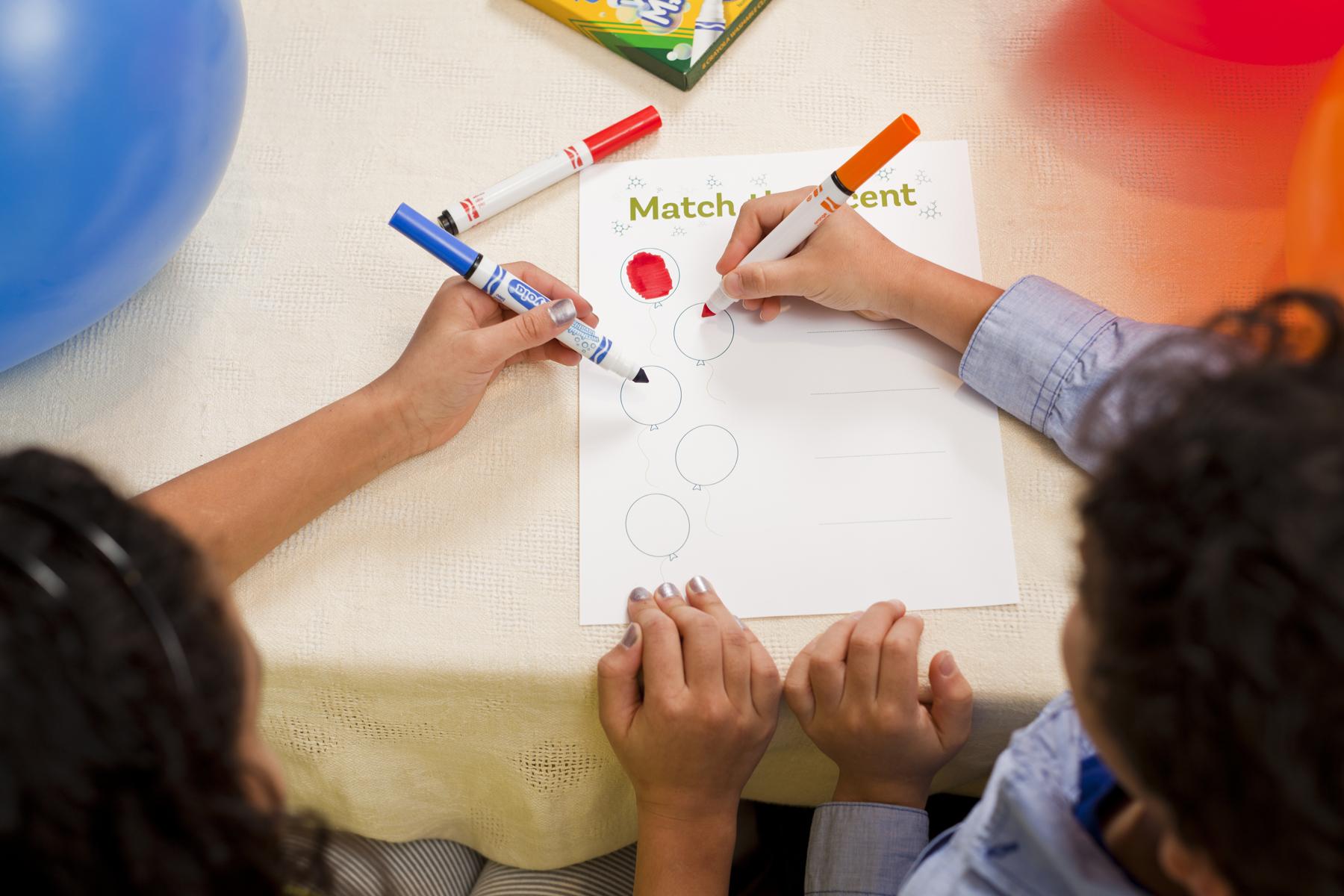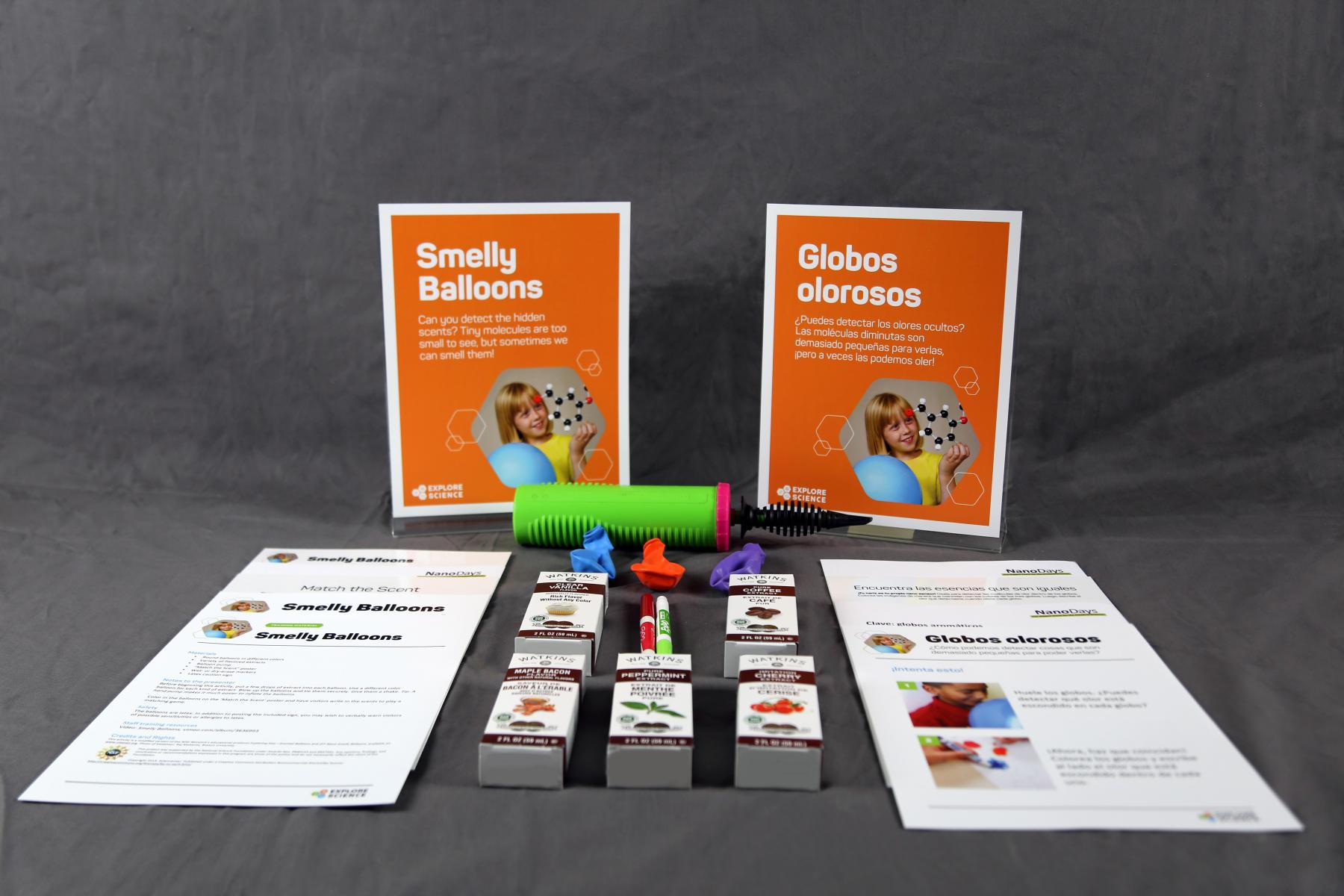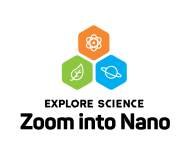DESCRIPTION
"Exploring Size - Smelly Balloons" lets visitors use their sense of smell to explore the world on the nanoscale. They learn that we can smell some things that are too small to see, and that a nanometer is a billionth of a meter. "Explore Science - Zoom into Nano Smelly Balloons" (2016) version designed for groups and community outreach.
DESCRIPTION
"Exploring Size - Smelly Balloons" lets visitors use their sense of smell to explore the world on the nanoscale. They learn that we can smell some things that are too small to see, and that a nanometer is a billionth of a meter. "Explore Science - Zoom into Nano Smelly Balloons" (2016) version designed for groups and community outreach.
TRAINING VIDEOS
OBJECTIVES
BIG IDEA
A nanometer is a billionth of a meter.
LEARNING GOALS
A nanometer is a billionth of a meter.
NANO CONTENT MAP
Nanometer-sized things are very small, and often behave differently than larger things do.
DOWNLOAD FILES
- Exploring Size Smelly Balloons - Guide (doc)
- Exploring Size Smelly Balloons - Guide (pdf)
- Exploring Size Smelly Balloons - Sign (pdf)
- Exploring Size Smelly Balloons - Poster (pdf)
- Exploring Size Smelly Balloons - Key (doc)
- Exploring Size Smelly Balloons - Key (pdf)
- Exploring Size Smelly Balloons - Allergy Notice (doc)
- Exploring Size Smelly Balloons - Allergy Notice (pdf)
- Exploring Size Smelly Balloons- Sources (xls)
- Packing instructions for the Smelly Balloons activity from the Explore Science- Nano kit (pdf)
- Exploring Size Smelly Balloons - Materials (jpg)
- Exploring Size Smelly Balloons - Guide (Spanish) (doc)
- Exploring Size Smelly Balloons - Guide (Spanish) (pdf)
- Exploring Size Smelly Balloons - Sign & Guide (Spanish) (pdf)
- Exploring Size Smelly Balloons - Poster (Spanish) (pdf)
- Exploring Size Smelly Balloons - Key (Spanish) (doc)
- Exploring Size Smelly Balloons - Key (Spanish) (pdf)
- Exploring Size Smelly Balloons - Allergy Notice (Spanish) (doc)
- Exploring Size Smelly Balloons - Allergy Notice (Spanish) (pdf)
Credits
The Science Museum of Minnesota
Developed for the NISE Network with funding from the National Science Foundation under Award Numbers 0532536 and 0940143. Any opinions, findings, and conclusions or recommendations expressed in this product are those of the authors and do not necessarily reflect the views of the Foundation.
Creative Commons Attribution Non-Commercial Share Alike 3.0 United States (CC BY-NC-SA 3.0 US).
View more details

NISE Network products are developed through an iterative collaborative process that includes scientific review, peer review, and visitor evaluation in accordance with an inclusive audiences approach. Products are designed to be easily edited and adapted for different audiences under a Creative Commons Attribution Non-Commercial Share Alike license. To learn more, visit our Development Process page.






